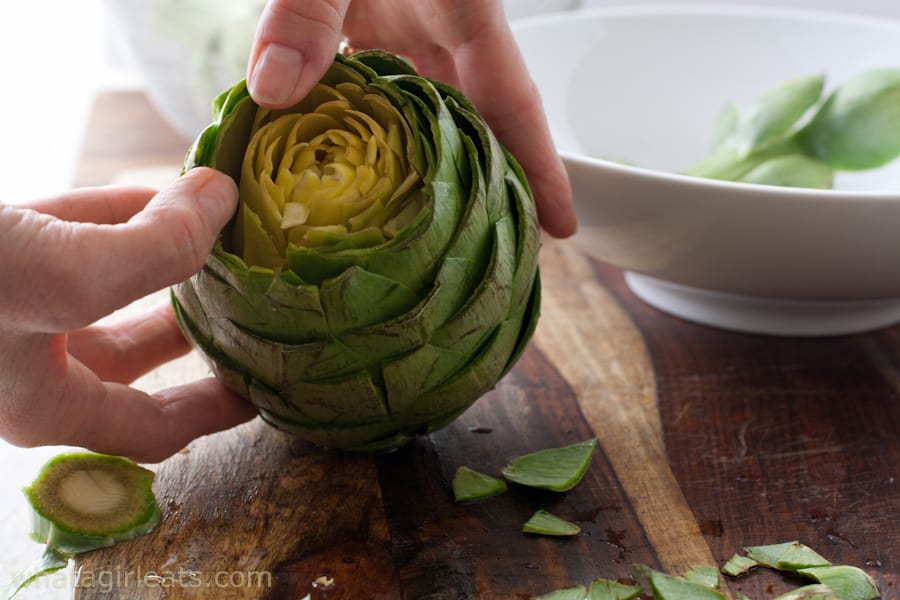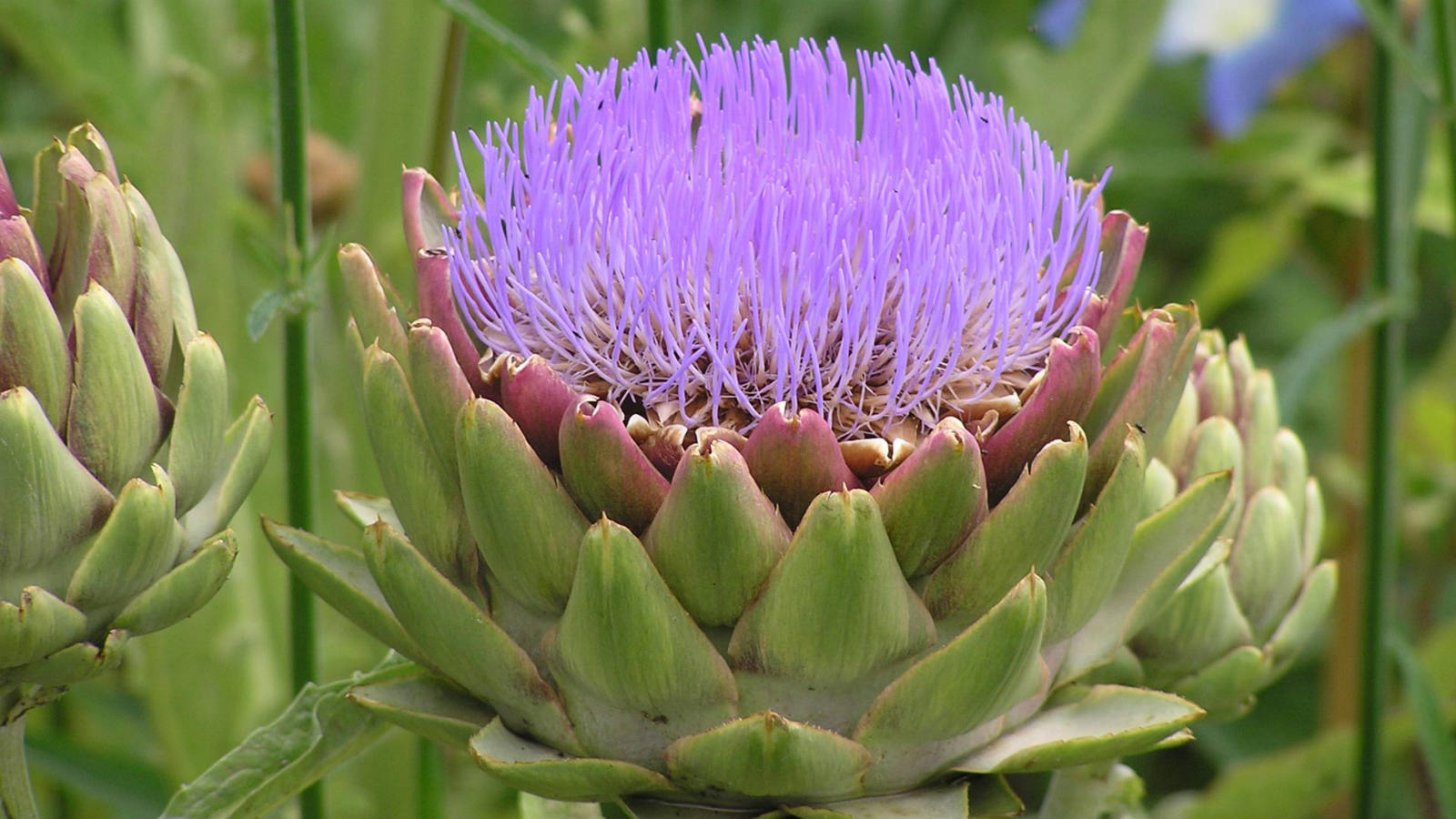Away with you Jack Frost, say eager gourmands in quest of warmer times which by tradition yield a cornucopia of gastronomic adventures. Enough now of broths and heavy fare that sticks to your ribs, as mother would say. Titillate your senses with something clean, something naughty but nice—an adventure if you please.
Those who don't find food and the partaking of it a sensual experience are missing so much. Ponder, for example, the artichoke, a vegetable that can evoke a lascivious mind to a licentious act with a fervour no other vegetable can possibly summon, except for the phallic asparagus already covered on these pages.
Imagine this scene: A sultry Saturday evening. Friends gathered around the table harmonious in chatter. A candle flickers gently. The wine is mellow and coolly refreshing. The first course is served, an artichoke. Its leaves are perfectly manicured and mute green in colour. Much like the patina of antique copper on ageing church spires. Nothing set on a white plate could be so richly Mediterranean.

Although first popularised in Sicily, the artichoke received much attention during the Middle Ages by Catherine de' Medici who brazenly flaunted her partiality to the vegetable by gorging herself to the point of sickness. Because artichokes were supposed to be an aphrodisiac, Catherine drew the ire of her peers for such contemptible behaviour. It was considered that young women of proper standing shouldn't eat, or perhaps, didn’t really need such things.
The Romans were most fond of artichokes, which, according to legend, were born when a jealous God converted a woman to a thistle. I suppose that's acceptable if you consider a kiss can change a frog into a prince.

In the city of Florence stands an artichoke fountain paying homage to the edible perennial. Artists, great and contemporary have captured it on canvas. Ballads, poems, and essays have been written, spoken and sung in praise of the artichoke and all its gastronomic attributes.

Crafted by Florentine sculptor Giovan Francesco Susini (1585 c. – 1653) and collaborators, the Artichoke Fountain emerged between 1639 and 1642. It's a masterpiece born from the vision of Grand Duke Ferdinando II, adorning a Palace terrace. An ode to late Mannerism and a local nod to Baroque.
Savouring the artichoke is an art. It is to be consumed with dedicated passion. The artichoke is not a food to be frivolously gobbled by the ravenous multitude. It is a culinary blessing to be approached with reverence and consumed fitfully by the cognoscente. The eating is a ritual of gastronomic precision that maintains the purity of flavour and perfection of shape.
Some infidels cast insult upon both gourmet and vegetable by shamefully discarding the leaves and serving only the bottoms. The practice of stuffing the ennobled artichoke with unctuous, foreign concoctions is but the sorcery of misguided kitchen heretics. These deviations from perfection are perversions and should be vigorously spurned.
Eating the artichoke is a challenge to be conquered in stages. It must be unveiled layer by delicious layer. Leaf after succulent leaf is gently plucked from the sides, and then bathed in a mellow vinaigrette blessed with the richness of balsamic, garlic and parsley. The petal is then gently teased between the teeth yielding in its coolness the tiniest morsel of pleasure.

Slowly now, but ever so deliberately, one proceeds in such manner. It is a gustatory pursuit in quest of the climax. Those who wretchedly lunge and blunder in haste are justly denied the visionary joys of discovery as the ambrosial heart is at last conquered and lays bare and begging to be savoured.
If that sounds like something you would like to experience, here is my recipe.
ARTICHOKE AU VINAIGRETTE
2 large artichokes
THE SAUCE: serves 2.
4 tbs olive oil
1½ tbs. Balsamic vinegar
1 tbs Dijon mustard
1 small clove garlic, minced
1 spring onion, minced
1 tbs. parsley, chopped
Pepper & salt to taste
Whip all sauce ingredients together and divide into two small bowls, set aside. To prepare artichokes: cut the bottom flat and chop an inch off the top, rub cut areas with lemon. Using scissors, snip about half an inch off the tips of the leaves all round, it makes them look pretty. Place in a covered pot with about two inches of salted water and boil gently for 25 mins. Drain and allow to cool before serving.
Enjoy as explained in the above story.

" We are most comfortable with the things we know best. But if we always avoid the unfamiliar, how will we ever know what riches may be waiting for us, deep within the heart?"
― She Taught Me to Eat Artichokes: The Discovery of the Heart of Friendship
Until next week.
Chaucer































































